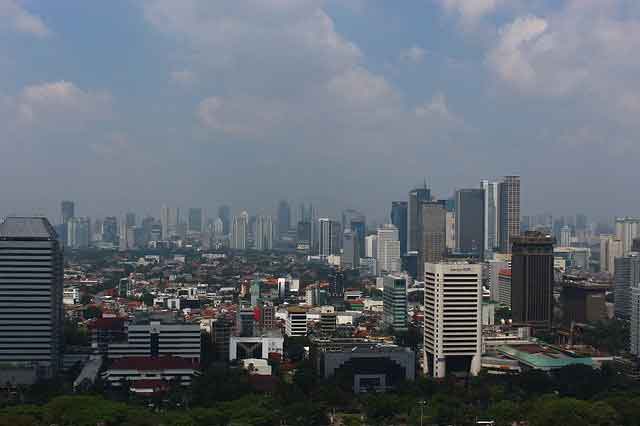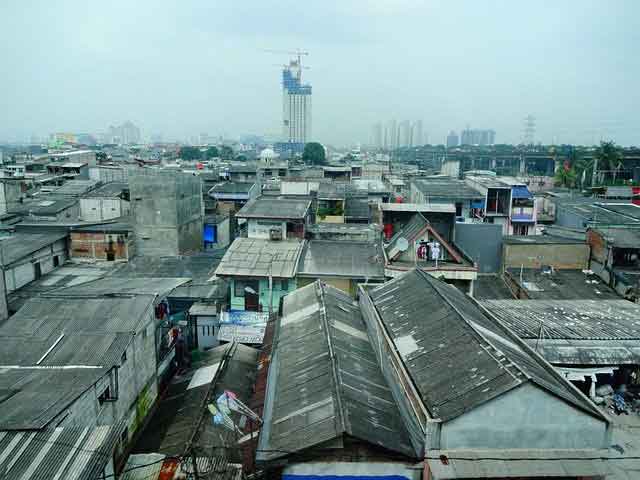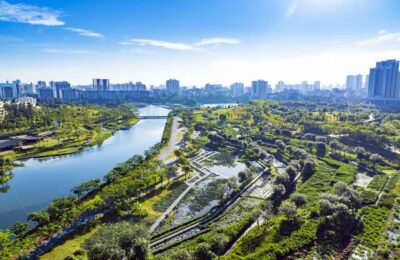In the August of 2019, the president of Indonesia Joko Widodo announced that the country will move its capital from Jakarta, which is situated on the island of Java to the province of East Kalimantan, on Borneo.
Indonesia relies on the majority of its economy from Jakarta.
Home to over 10 million people, Jakarta is sinking to the ground. According to researchers, parts of Jakarta would completely submerge by 2050. So, sinking formed the reason for Indonesia to move the capital city.
Besides the sinking issue, Jakarta ranked at No.10 in the list of cities with the worst traffic congestion in the world, according to the 2019 TomTom Traffic Index report.
Land subsidence issue, pollution and traffic congestion are major issues which caused the authorities to move to the capital city.
After years of speculations about moving the capital, the President of Indonesia has agreed to move the capital city out of Java island.
The new capital: In the island of Borneo
The government is spending $33 billion on moving its capital city to reduce the burden in Jakarta due to environmental issues.
Indonesia’s administrative operations would be moved to over 1,000km from Jakarta to Kalimantan, a portion of land that belongs to Indonesia in the island of Borneo which is also shared by Malaysia and Brunei.
However, it is considered that the 10 million residents are staying in Jakarta as the city continues to operate as a commercial and financial centre for the country.

The city of Jakarta where 10 million residents will remain in the city despite the sinking issue.
Delay in moving due to COVID-19 pandemic
The COVID-10 pandemic put a hold on the project with the government focusing on distributing vaccines to about 270 million people in the country.
Initially set to start in 2021, the project is now delayed to 2022 or 2023 due to the urgency of the pandemic stimulus-response.
According to an economist, there are financial concerns about moving the capital now due to the pandemic bringing pressure on the budget.
Extremely vulnerable to sea-level rise, especially North Jakarta
The models reveal the 95% of North Jakarta will be submerged by 2050.
In North Jakarta, about 2.5m has already sunk in 10 years. Few parts are sinking to about 25cm each year which is over twice the amount compared to other coastal megacities around the world. However, the other part of Jakarta is also sinking at a lower rate. With the west sinking to 15cm, east sinking to 10 cm, central to 2cm and south to 1cm.
Causes of sea-level rise
Thermal expansion causes sea-level rise, intensified by climate change factors.
The water is expanding because of further heat and the melting of ice. But Jakarta’s sinking level rate is terrifying the experts.
Poor urban planning on the area that was formerly a swamp and unregulated pumping of groundwater has left 40% of the city under the sea.
The city’s excessive groundwater pumping
Extraction of groundwater has been the reason behind land subsidence. Other poor urban planning and management issues such as poor waste management with rivers heavily polluted with waste and piped drinking water which serves only the high-income areas.
Since anyone can pump groundwater in the city, and the lack of affordable and clean water has led to residents and businesses pumping groundwater. The city’s foundation is lowering due to excessive pumping of groundwater leading to extensive subsidence. This is intensified further with climate change impacts.
Jakarta experiences extreme weather conditions with storm surges, frequent flooding and heavy rain from cyclones.
Rapid urbanization, construction pressure, excessive pumping of groundwater, climate change factors and natural movement of soils due to tectonic activities has caused Jakarta to sink at a faster rate than other countries affected by sea-level rise.

Rapid urbanization and constrcution are some of the factors which causes Jakarta to sink rapidly.
With many parts of the city disappearing into the sea, people living close to the sea especially poor and weaker neighbourhoods are highly vulnerable to loss of property and livelihood.

Weaker neighbourhoods and settlements beside the sea are highly vulnerable to damages from sinking that likely causes frequent flooding
Is it possible to stop the land subsidence with sea walls and artificial island?
Although sea walls are being constructed in the northern parts of Jakarta, with the sinking grounds the walks will be less useful. But authorities are hopeful that the Great Garuda, a $40 bn outer sea wall spanning over 32km and built alongside Jakarta Bay along with 17 artificial islands will help solve the sinking issue.
Solving the groundwater extraction problem
Jakarta needs to address excessive groundwater extraction to solve the long-term land subsidence.
Extreme groundwater extraction can be addressed with a better water management system, including water recycling, wastewater treatment, stormwater management and supplying all residents with enough water supply.
New infrastructural models and better urban and landscape planning can help build a resilient city.
Laws and regulations on illegal groundwater extraction could help prevent the subsidence issue.
Sinking of Jakarta has been the main reason to move to the island of Borneo. Although the move has been planned, without appropriate measures and an enhanced water management system the residents of Jakarta staying back would be affected by the sinking of the city.

